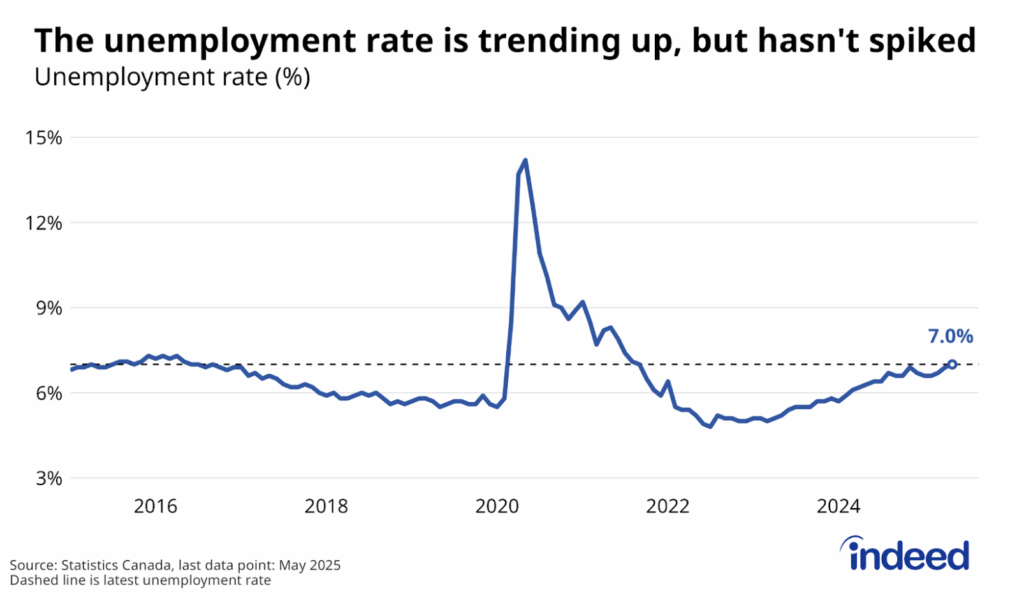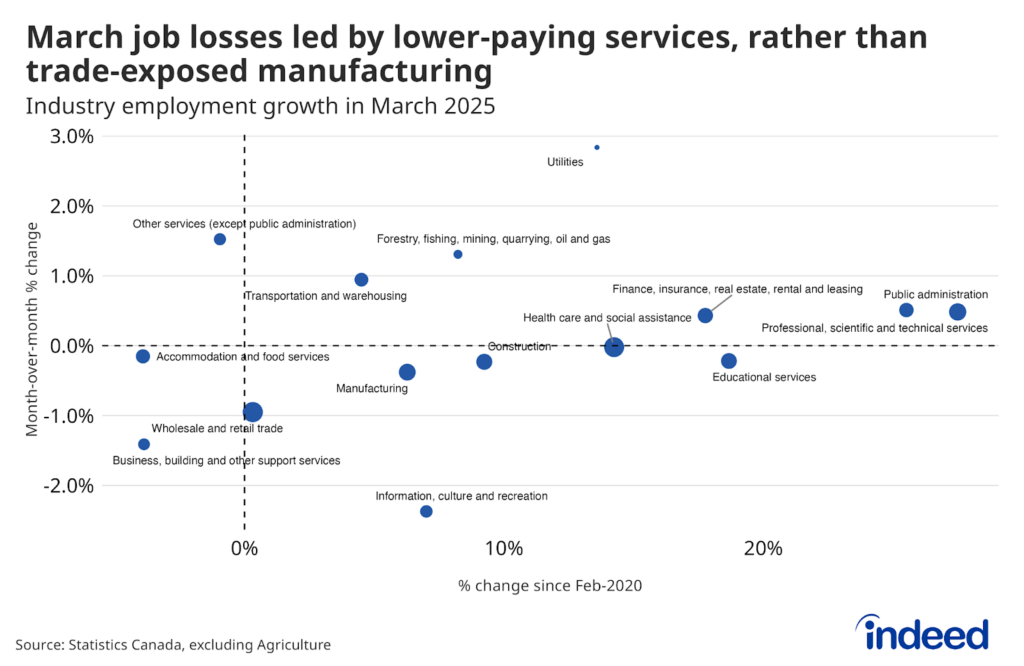Another strong month of job growth in September brought the employment rate of Canadians ages 25 to 54 to just a hair below its February 2020 level. However, the labour market rebound remains incomplete for certain groups. One of those divides is across education levels: employment rates of those aged 25 to 54 with university degrees have fully recovered, while they haven’t for others, despite solid progress.
Digging deeper, this gap across education levels is overwhelmingly concentrated in Canada’s large cities. Employment rates of university grads are back to pre-pandemic levels in both Canada’s nine largest metro areas (CMAs), as well as in the rest of Canada.
Meanwhile, conditions for those without university degrees are noticeably weaker in large urban areas than elsewhere. This September, employment rates of those aged 25 to 54 with high school diplomas or less in major CMAs were down 3.4% from two years prior, while they were up 1.7% elsewhere. The rebound among those with post-secondary certificates or diplomas has also been weaker in large urban areas.
There’s no one factor evident in the Labour Force Survey data explaining why the employment rebound of prime-age workers without university education has lagged in large urban centres. The gap is evident among both men and women, and also remains after excluding Toronto from the calculation.
Interestingly, one industry not driving the difference among this demographic group is accommodation and food services. As of September, declines in this hard-hit sector compared to two years earlier have actually been slightly more severe outside of large CMAs (for both non-degree holders, and overall). Instead, weakness in major urban centres has been more pronounced across a range of industries, led by non-durable goods manufacturing, transportation and warehousing, professional and technical services, as well as business, building and other support services.
A key question for the labour market throughout the pandemic is the ease to which the labour market can recover as the public health crisis fades. Overall progress has been solid, but conditions facing certain groups still aren’t back to pre-pandemic levels. In some sectors, like transportation, as well as certain business support services (e.g. office cleaning), there are potentially direct links between the pandemic’s ongoing economic impacts and the gap in employment recovery between large cities and elsewhere. Whether this suggests further room for strong gains or more entrenched challenges will be important to watch in the months ahead.
Methodology
This post uses non-seasonally adjusted Labour Force Survey data available in the public-use microfiles (PUMFs). The nine largest census metropolitan areas included in the PUMFs are: Calgary, Edmonton, Hamilton, Montreal, Ottawa, Quebec, Toronto, Vancouver, and Winnipeg.






